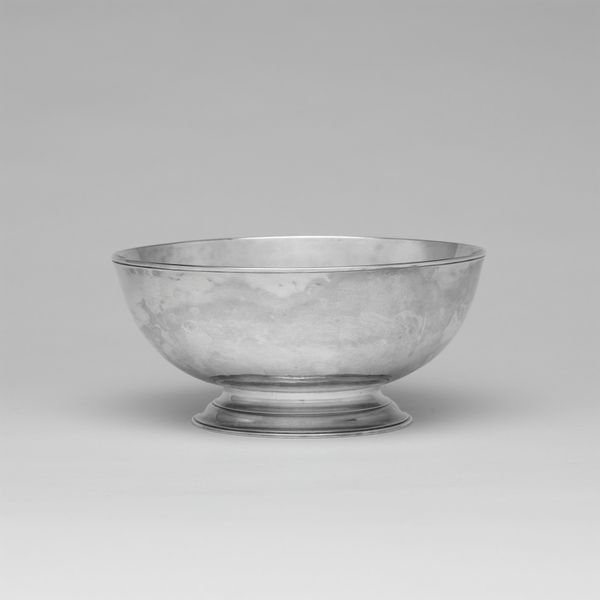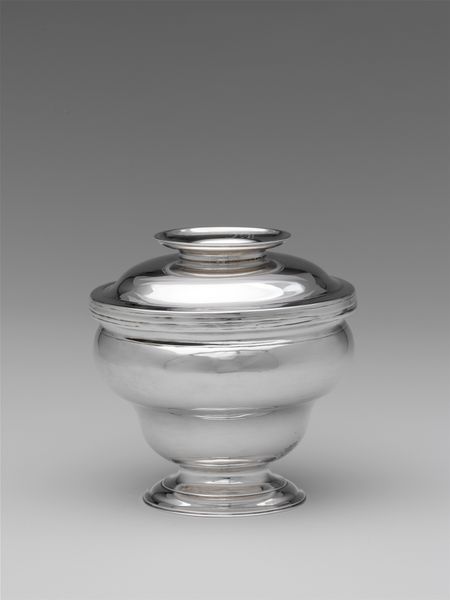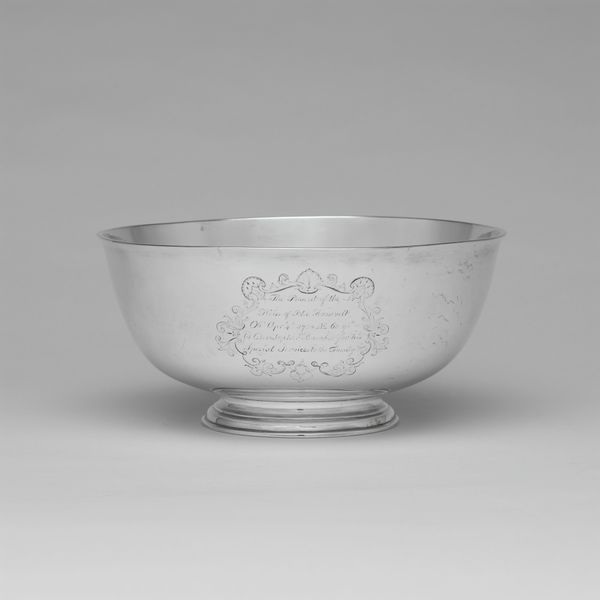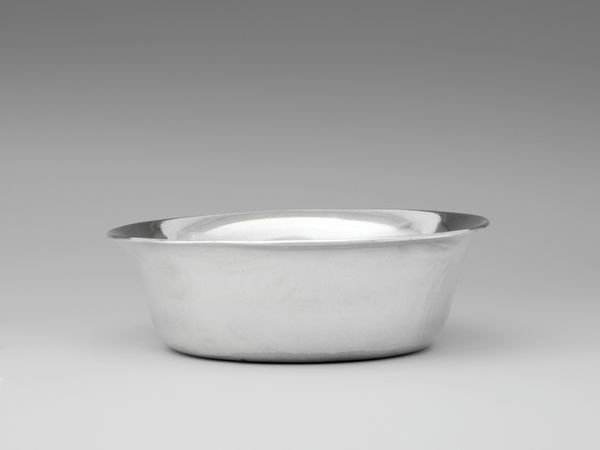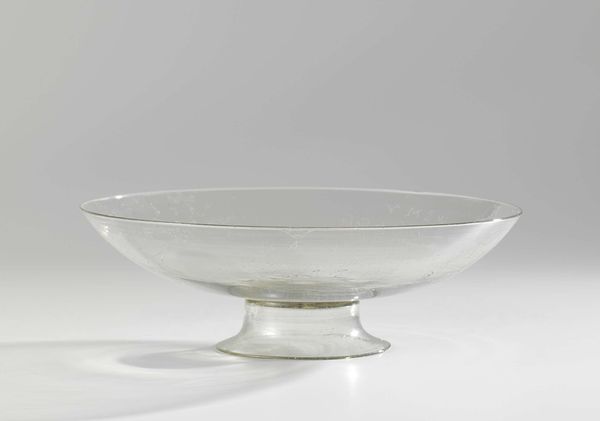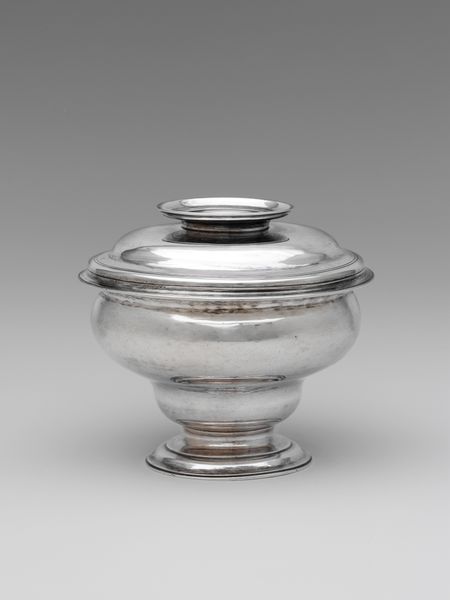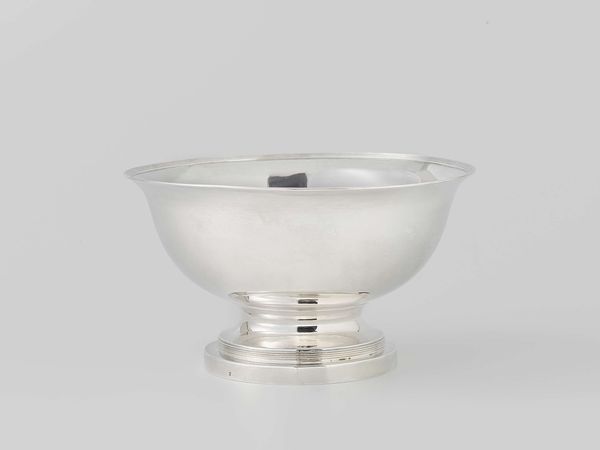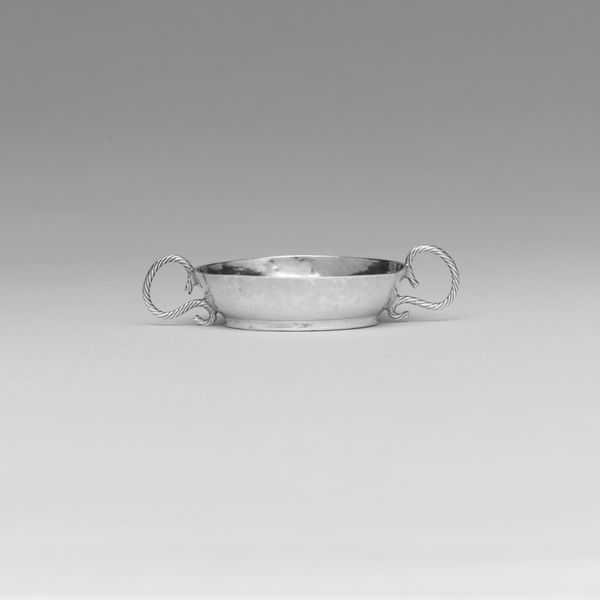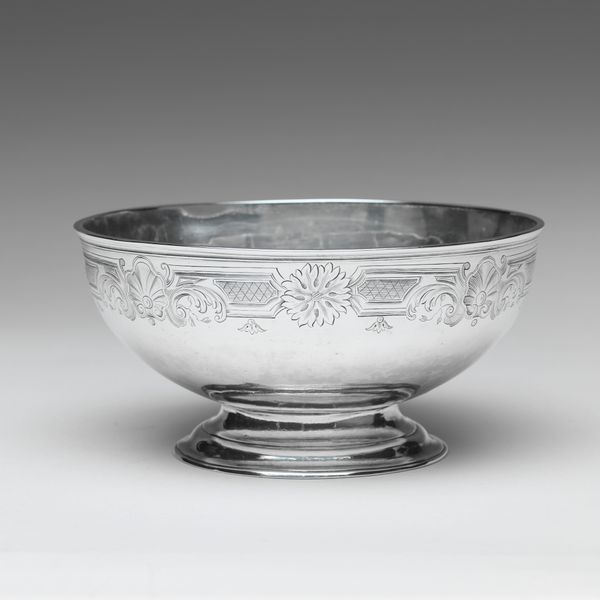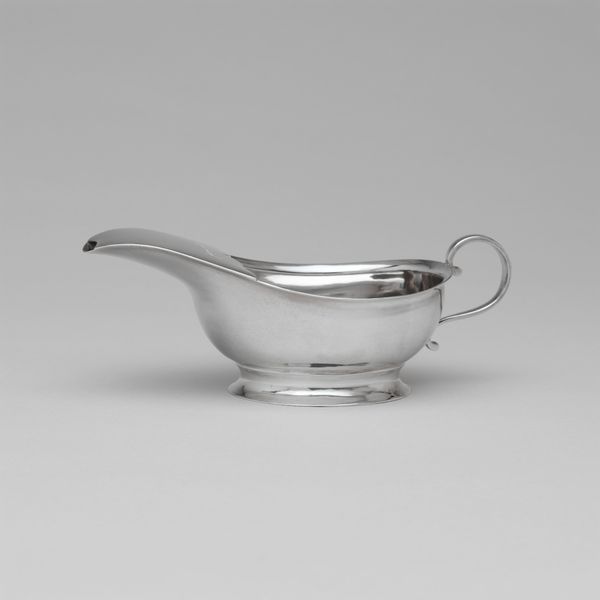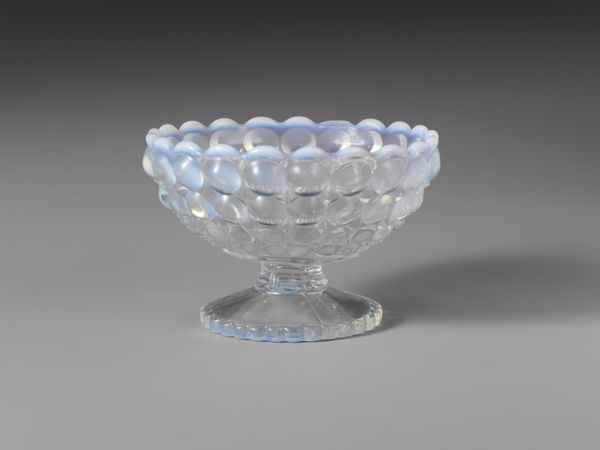
silver, metal
#
silver
#
metal
#
classicism
#
decorative-art
Dimensions: Overall: 3 x 7 1/8 in. (7.6 x 18.1 cm); 10 oz. 15 dwt. (334.2 g) Foot diameter: 3 1/2 in. (8.9 cm)
Copyright: Public Domain
Curator: This striking piece is a silver punch bowl, crafted by Chauncey Johnson sometime between 1822 and 1825. Its elegance resonates with the spirit of classicism, now residing here at the Metropolitan Museum of Art. What's your first impression? Editor: Stark, isn't it? It’s simple and sleek, a gleaming metal surface elevated by the barest hint of ornamentation, almost painfully pure and minimalist. Curator: The purity echoes the Neoclassical ideals that informed design at the time. The punch bowl becomes more than just a vessel; it's a statement, a reflection of aspiration towards idealized forms and order. We might see it reflecting an era defined by growing economic disparity and industrial advancement. What do you think this tension means? Editor: I would imagine its purpose as more complex, being tied up with performance of wealth and elite socializing within a growing republic still grappling with ideas of equality. The communal aspect of punch seems almost to mock the exclusive social strata for which this bowl was created. Curator: Indeed. The shared drink contrasts with the item's undeniable value. Consider the repeated beaded patterns. They emphasize refinement and visual precision through repetition and meticulous handcraft. To use anthropology as a starting point, doesn’t that sort of repetitive decoration suggest ritual, or even some archaic rite of convivial unification? Editor: Absolutely. I look at it and see the materialization of a particular historical narrative. Silver was linked to power, and punch bowls like these were centrepieces at gatherings that often excluded marginalized communities from meaningful decision making, from the "conversation" being shared through drinks and social communion. Curator: Perhaps we're also seeing echoes of the Enlightenment here? Think about that era's focus on balance, order, the restrained. It suggests aspiration, perhaps, but it still bears traces of tension, both cultural and individual, especially when positioned as part of early republic society. Editor: Definitely, its seeming simplicity is profoundly misleading. An object seemingly free from ideology or "artifice," which in truth performs social functions as profoundly complex. It highlights how certain spaces, social rituals, and objects have historically, and continue to be, implicated in complicated structures of inclusion and exclusion. Curator: It has been illuminating to trace those nuances with you. It becomes an echo, resonating to our time. Editor: Agreed. Let us raise a glass in solidarity… hopefully a non-silver one that is a bit less steeped in its colonial inheritance.
Comments
No comments
Be the first to comment and join the conversation on the ultimate creative platform.
